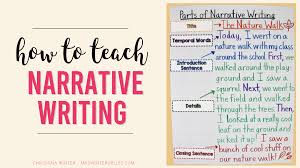
Unveiling the Multifaceted Power of Narrative
The Power of Narrative: Shaping Our Understanding of the World
In the realm of storytelling, narrative stands as a powerful tool that shapes our perception, understanding, and connection to the world around us. Whether conveyed through literature, film, art, or personal anecdotes, narratives have the ability to transport us to different realms, evoke emotions, and provoke thoughts.
At its core, a narrative is more than just a sequence of events; it is a reflection of human experiences, beliefs, and values. Through narratives, we make sense of our past, present, and envision possibilities for the future. They provide context to our lives and help us navigate the complexities of existence.
One key aspect of narratives is their ability to create empathy and foster understanding. By immersing ourselves in the stories of others, we gain insights into diverse perspectives and cultivate compassion for those whose experiences differ from our own. This empathy bridges gaps between individuals and communities, fostering unity in a world often divided by differences.
Moreover, narratives have the power to inspire change and drive action. Stories of resilience in the face of adversity spark hope; tales of triumph over challenges ignite motivation; accounts of injustice fuel activism. Through storytelling, we not only document history but also shape its course by influencing attitudes and behaviors.
As we navigate an increasingly complex and interconnected world, narratives serve as guiding lights that illuminate paths forward. They remind us of our shared humanity and encourage us to embrace diversity as a source of strength rather than division. By engaging with diverse narratives, we expand our worldview and enrich our lives with new perspectives.
In conclusion, narrative holds immense power in shaping our understanding of the world. It is through stories that we connect with each other on a deeper level, explore the depths of human experience, and envision a more inclusive future. Let us continue to cherish and celebrate the diverse narratives that make up the tapestry of our existence.
9 Essential Tips for Crafting a Captivating Narrative
- Develop strong and relatable characters.
- Create a clear beginning, middle, and end for your story.
- Use descriptive language to paint vivid scenes for the reader.
- Maintain a consistent tone throughout the narrative.
- Show, don’t tell – let actions and dialogue reveal character traits and emotions.
- Build tension and conflict to keep readers engaged.
- Ensure your plot has a logical progression that keeps readers interested.
- Consider the pacing of your story to maintain reader engagement.
- Craft a memorable conclusion that leaves an impact on the reader.
Develop strong and relatable characters.
In crafting a compelling narrative, one essential tip is to develop strong and relatable characters. Characters serve as the heart of any story, anchoring the plot and engaging the audience on an emotional level. By creating characters with depth, complexity, and relatable traits, writers can draw readers into their world, fostering empathy and investment in the unfolding narrative. Strong characters resonate with audiences, evoking genuine emotions and forging connections that endure beyond the final page or screen time. Their struggles, triumphs, and growth not only drive the story forward but also mirror aspects of our own humanity, making the narrative experience richer and more impactful.
Create a clear beginning, middle, and end for your story.
When crafting a narrative, it is essential to create a clear beginning, middle, and end for your story. The beginning sets the stage, introduces characters, and establishes the setting or conflict. The middle develops the plot, builds tension, and allows for character growth or transformation. Finally, the end provides resolution, closure, or leaves room for reflection. By structuring your narrative with a well-defined beginning, middle, and end, you guide your audience through a cohesive and engaging storytelling experience that resonates long after the final words are read or heard.
Use descriptive language to paint vivid scenes for the reader.
When crafting a narrative, incorporating descriptive language is essential to immerse the reader in the story’s world. By painting vivid scenes with rich details and sensory imagery, writers can transport their audience to the setting, allowing them to see, hear, smell, taste, and feel the environment alongside the characters. This use of descriptive language not only enhances the reader’s engagement but also adds depth and realism to the narrative, making it more compelling and memorable.
Maintain a consistent tone throughout the narrative.
When crafting a narrative, it is crucial to maintain a consistent tone throughout the story. A consistent tone helps establish the mood and atmosphere of the narrative, guiding readers through the unfolding events with clarity and coherence. Whether aiming for a formal, light-hearted, suspenseful, or introspective tone, staying true to that tone ensures that the message and emotions conveyed remain cohesive and impactful. By maintaining consistency in tone, writers can effectively engage their audience and create a compelling storytelling experience that resonates long after the last word is read.
Show, don’t tell – let actions and dialogue reveal character traits and emotions.
In the realm of storytelling, the tip “Show, don’t tell” serves as a fundamental principle in creating engaging narratives. By allowing actions and dialogue to reveal character traits and emotions, writers can immerse readers in the story’s world and deepen their connection to the characters. Through subtle nuances in behavior and conversations, readers are not only informed about the characters but also invited to interpret and empathize with them on a more profound level. This approach not only enhances the storytelling experience but also fosters a more vivid and authentic portrayal of characters within the narrative landscape.
Build tension and conflict to keep readers engaged.
To create a compelling narrative that captivates readers, it is essential to build tension and conflict throughout the story. By introducing challenges, obstacles, and unresolved issues, you keep readers engaged and eager to uncover the outcome. Tension adds depth to the plot, creating a sense of anticipation and emotional investment in the characters’ journeys. Conflict drives the narrative forward, sparking curiosity and suspense as readers navigate through twists and turns. Ultimately, by skillfully weaving tension and conflict into your storytelling, you create a dynamic and immersive experience that leaves a lasting impact on your audience.
Ensure your plot has a logical progression that keeps readers interested.
To craft a compelling narrative, it is crucial to ensure that your plot unfolds in a logical progression that captivates and maintains the interest of your readers. A well-structured storyline with clear cause-and-effect relationships not only keeps the audience engaged but also allows them to follow the flow of events seamlessly. By maintaining a sense of coherence and continuity in your plot development, you create a satisfying reading experience that propels the story forward while keeping readers eagerly turning the pages to uncover what happens next.
Consider the pacing of your story to maintain reader engagement.
When crafting a narrative, it is crucial to consider the pacing of your story to sustain reader engagement. The rhythm at which events unfold can greatly impact the reader’s experience, drawing them in with well-timed revelations and moments of tension. By carefully managing the pace, you can create a dynamic storytelling arc that keeps readers eagerly turning the pages, eager to uncover what happens next. Strike a balance between moments of intensity and reflection to maintain a sense of intrigue and captivate your audience from beginning to end.
Craft a memorable conclusion that leaves an impact on the reader.
Crafting a memorable conclusion is essential in narrative writing as it serves as the final impression that lingers with the reader long after the story ends. A powerful conclusion should tie together key themes, emotions, or revelations from the narrative, leaving a lasting impact on the reader’s mind and heart. By carefully crafting this concluding moment, writers have the opportunity to evoke strong emotions, provoke thought, or inspire action, ensuring that their story resonates deeply with the audience and leaves a lasting imprint on their thoughts and feelings.









-
Tagged analysis, bridge gaps, comprehensive news coverage, coverage, dialogue